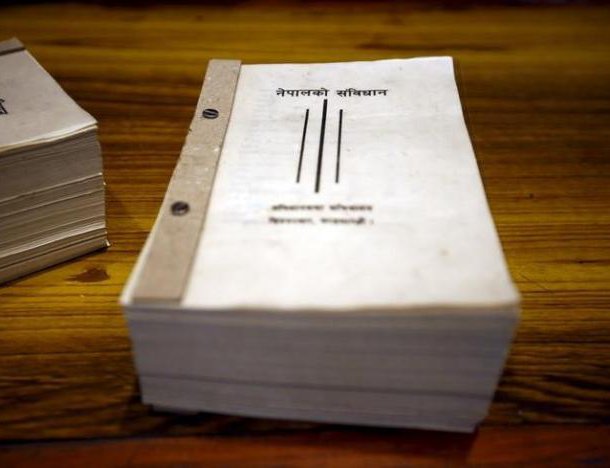
While we in our part of the world have read about the great flood at the time of Manu, others elsewhere have stories of Noah’s Ark and its landing at Mount Ararat. A later event is about Moses receiving the two tablets with the Ten Commandments from God. These orders are the first commands indicating how Jews should conduct their lives on earth. Can this be taken as the first of the constitutions in the history of mankind? Manusmriti or the Laws of Manu, which casts people into four categories, is also an early code for Hindus of around 100 CE. Having a constitution for any country is a prerequisite to look respectable. Now, with 206 listed states worldwide, we are in a situation of constitutions galore!
Constitutions have in fact been in existence since ancient times. The Code of Justice of the Sumerians was dated as early as 2300 BCE. Then from 1750 BCE, the well known code of Hammurabi of Babylon came into being. The Romans codified their constitution around 450 BCE.
Initially the Pope ruled over the kings and the people of Europe until a division occurred and the Greek Orthodox Church separated from the church at Rome. Henry VIII of England broke away from the Papal rule and formed the Anglican Church with himself as monarch. Later the Protestants of many lands of Europe distanced themselves too from Rome. Because of religious persecution many left Europe for new lands in the Americas.
A constitution, as a written legal document passed by the authorities of a country according to which it is governed, is referred to as being codified. The United Kingdom has no document as such but is governed as per the common law practices of the past, court cases or treaties. A well known historical event was the signing of the Magna Carta in 1215 CE by which the then reigning monarch King John of England signed away his power to the people. The French, since 1789 CE, with their many governments – monarchies, republics and empires have had a number of constitutions which have been promulgated periodically over the last three hundred years. They can thus claim to be experts in this field.
King Prithivi Narayan Shah was the creator of modern Nepal when he, starting from his small principality of Gorkha brought about the amalgamation of the ‘Baieses and the Chaubises’ into his realm. At Kantipur he had to make overtures to the people before he was accepted as a ruler. His ‘Divyopadesh’ or Divine Counsel on how to deal with the Northern and Southern neighbours was a guideline for conduction of state matters. Subsequent conquests by his successors created a ‘Greater Nepal’ which lasted for a limited period as the Nepalis were checkmated by the British at Sugauli, to forgo the territories they had conquered. Forty years later, Jung Bahadur managed to get back for Nepal the ‘Naya Muluk’ or a little part of the territory that the British had taken in 1816 CE.
Constitution in the Western format started in Nepal during the time of Padma Shumsher, one of the hereditary Rana Prime Ministers of Nepal. He gave some power to the people by announcing the first written Constitution of Nepal in 1948 (2004 BS).
We must recall that talk of a Constitution started from the time when King Tribhuvan came back to Kathmandu in February 2007 after his temporary stay in Delhi. Whilst alighting from the plane he held aloft his right hand and displayed to the public a proposed constitution. That proposed constitution may be said to have been transformed or converted into an Interim Government Act of March 1951.
The third was the constitution drawn up by Bhagwati Prasad Singh and was enacted and proclaimed on 12th February 1959. The fourth in 1962 was with the aid of Sir Ivor Jennings from UK with input of local experts whom King Mahendra had included in the drafting. This constitution had as its bearings the word Panchayati Raj, said to have originated from ancient Vedic times in our part of the world and meaning thereby that it was a form of local administration of day to day affairs. Whilst this concept has been done away in Nepal, it is noteworthy to state that Part IX of the Indian Constitution relates to Panchayats. Panchayati Raj was further formalised in India by the 73rd constitutional amendment in 1993 and currently exists in all states except in Nagaland, Meghalaya, Mizoram and Union Territories. What is worth pondering over is how the word ‘Panchayat’ became an anathema to our politicians, ever ready to create a rumpus. An amendment to this constitution with the concept of ‘Politics for Development’ was done during the time of King Birendra in 1975 CE.
The fifth version was the one drawn up by a special committee headed by PM Krishna Prasad Bhattarai and including Nirmal Lama. This constitution of 1990 BS recognises the people as the source of its power and touted as the best in the world was written within a year. With the abolition of monarchy a sixth format of the constitution came into being in 2007 CE.
Our 1st Constituent Assembly didn’t finish the task of constitution writing. The 2nd Constituent Assembly brought out a version later presented to the people all over Nepal for comments. The responses were just cursorily discussed over three days, ignored and passed by 2/3rd majority with a show of hands. This constitution of the Federal Democratic Republic of Nepal, 2072 BS (2015 CE) is the seventh in this reckoning and took almost seven years to compile. Two amendments have been made so far and others are expected. Currently it is now being debated over as to whether it should be ‘Amended’ or ‘Rewritten’. Nothing is permanent is this world. Change is something which is going on continuously. Let’s await developments! .
The author is a retired medical doctor and writes fiction under the pen name of Mani Dixit also. Website: www.hdixit.org.np. Twitter: @manidixithd

Hemang Dixit
The author writes fiction under the name of Mani Dixit. Website: www.hdixit.org.np. Twitter: @manidixithd
- Top Heavy
- Sep 20, 2023
- Most Able?
- Sep 04, 2023
- Changing Times
- Aug 21, 2023
- Nepali Shenanigans
- Aug 03, 2023
- Budget Naataks
- Jun 29, 2023
















